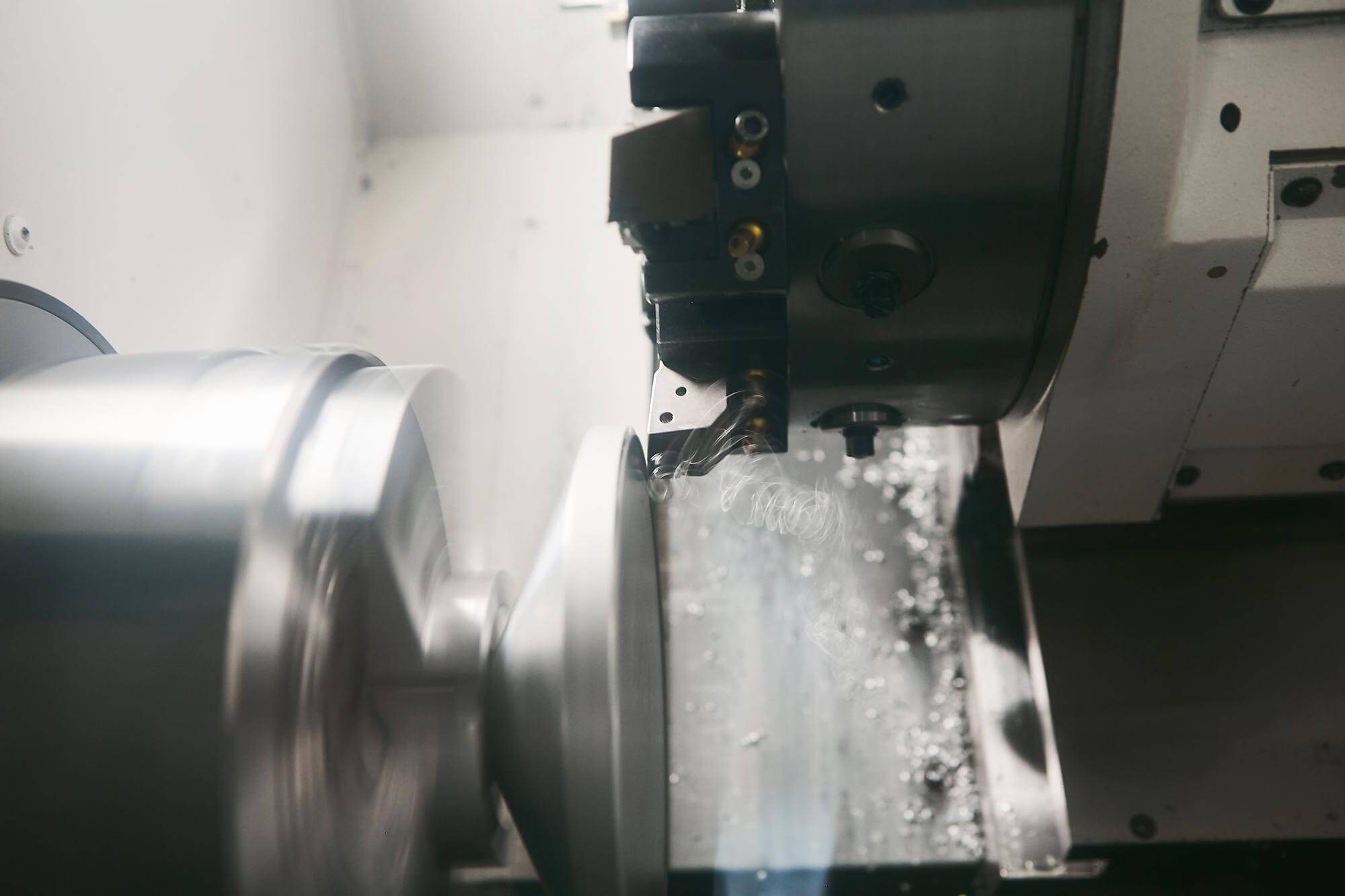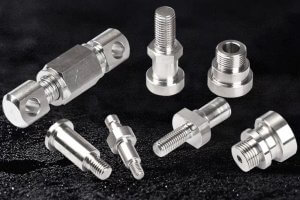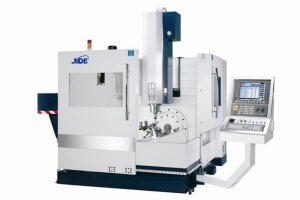CNC turning is a critical aspect of modern manufacturing, enabling the precise production of cylindrical parts used across various industries, from automotive to aerospace. The choice of lathe tools plays a pivotal role in ensuring that these parts meet stringent quality standards. This article provides an in-depth look at CNC turning, the key factors influencing tool selection, and the essential criteria for choosing high-quality lathe tools. Whether you’re a procurement officer seeking the best tools for your production line or a technician striving for precision in machining, this guide is designed to offer valuable insights.
What is CNC Turning?
CNC (Computer Numerical Control) turning is a subtractive manufacturing process where material is removed from a rotating workpiece using a cutting tool. The process is highly automated, with the CNC machine controlling the movement of the lathe tool based on pre-programmed instructions. CNC turning is widely used to create cylindrical parts such as shafts, pulleys, and screws, where high precision and repeatability are essential.
Key Components of CNC Turning:
- Workpiece: The material being machined, which is typically cylindrical.
- Lathe Tool: The cutting tool that removes material from the workpiece.
- Chuck: The device that holds the workpiece in place as it rotates.
- Spindle: The part of the CNC machine that rotates the workpiece.
- Tailstock: Provides additional support for the workpiece during machining.
The Importance of Choosing the Right Lathe Tool
The selection of lathe tools directly impacts the efficiency, precision, and quality of the CNC turning process. The wrong tool can lead to increased wear and tear, poor surface finish, and even machine damage. Conversely, the right tool enhances productivity, prolongs tool life, and ensures a superior finish on the machined part.
Factors to Consider When Choosing a Lathe Tool:
- Material Compatibility: The tool must be suitable for the material being machined.
- Tool Geometry: Includes the tool’s shape, angle, and cutting edge, which affect chip formation and cutting forces.
- Coating: High-quality coatings like titanium nitride (TiN) can reduce wear and improve tool longevity.
- Toolholder Compatibility: Ensures that the tool fits securely in the machine and can withstand the cutting forces involved.
Understanding Lathe Tool Materials
Lathe tools are made from a variety of materials, each with specific properties that make them suitable for different applications. Here’s a look at some of the most common materials used in lathe tools:
| Material | Characteristics | Common Applications |
|---|---|---|
| High-Speed Steel (HSS) | High toughness, good wear resistance, can withstand high temperatures | General-purpose machining, including both ferrous and non-ferrous metals |
| Carbide | Extremely hard, high wear resistance, can maintain a sharp edge at high temperatures | High-speed machining of hard materials, including steel and cast iron |
| Ceramic | High hardness, excellent wear resistance, less prone to deformation at high temperatures | High-speed finishing of hardened steels and other hard-to-machine materials |
| Cermet | Combination of ceramic and metal, high wear resistance, smooth surface finish | Finishing operations on steel and stainless steel |
| Cubic Boron Nitride (CBN) | Extremely hard, excellent thermal stability, resistant to oxidation | Machining of hardened steels, superalloys, and other difficult materials |
| Polycrystalline Diamond (PCD) | Superior hardness, wear resistance, excellent surface finish | Non-ferrous metals, composites, and abrasive materials like aluminum alloys |
CNC Turning Operations and Tool Selection
CNC turning encompasses a variety of operations, each requiring specific tools. Understanding the types of operations can guide the selection of the most suitable tools.
1. Roughing
- Objective: Remove large amounts of material quickly.
- Tool Choice: Sturdy tools with large nose radii and robust edges, typically carbide or ceramic tools.
2. Finishing
- Objective: Achieve a smooth surface finish with precise dimensions.
- Tool Choice: Tools with fine edges and smaller nose radii, often made from CBN or PCD for superior finish quality.
3. Grooving
- Objective: Create grooves or slots in the workpiece.
- Tool Choice: Specialized grooving tools, often carbide, designed to cut narrow and deep slots.
4. Threading
- Objective: Cut threads on the inside or outside of a cylindrical part.
- Tool Choice: Threading inserts with precise geometry, often coated to reduce wear during the high-stress operation.
The Role of Tool Geometry in CNC Turning
The geometry of a lathe tool, including its rake angle, clearance angle, and nose radius, significantly affects the cutting process. These geometrical features determine the chip formation, heat generation, and overall cutting efficiency.
- Rake Angle: The angle formed between the face of the tool and the workpiece surface. Positive rake angles reduce cutting forces and improve surface finish but may reduce tool strength.
- Clearance Angle: The angle between the tool’s flank and the workpiece surface. Adequate clearance prevents the tool from rubbing against the workpiece, reducing friction and heat.
- Nose Radius: The rounded tip of the cutting tool. A larger nose radius improves tool life and surface finish but requires higher cutting forces.
Table 2: Recommended Tool Geometry for Various Materials
| Material | Rake Angle | Clearance Angle | Nose Radius | Comments |
|---|---|---|---|---|
| Aluminum | 15° to 20° | 10° to 12° | 0.4mm to 0.8mm | High rake angle to reduce cutting forces |
| Steel | 6° to 12° | 8° to 10° | 0.2mm to 0.4mm | Moderate angles for balance between cutting force and tool life |
| Stainless Steel | 8° to 10° | 6° to 8° | 0.2mm to 0.4mm | Smaller angles to handle high toughness of the material |
| Cast Iron | 0° to 5° | 8° to 12° | 0.8mm to 1.2mm | Low rake angle to reduce tool chipping |
| Titanium | 10° to 15° | 5° to 8° | 0.2mm to 0.4mm | High clearance angle to reduce heat build-up |
Common Challenges in CNC Turning
While CNC turning offers high precision and repeatability, it is not without challenges. Understanding these challenges can help in choosing the right tools and optimizing machining parameters.
1. Tool Wear
- Challenge: Excessive wear can lead to poor surface finish and dimensional inaccuracies.
- Solution: Use coated tools, optimize cutting speeds, and ensure proper cooling.
2. Heat Generation
- Challenge: Excessive heat can cause tool deformation, workpiece damage, and reduced tool life.
- Solution: Use tools with high thermal conductivity, apply cutting fluids effectively, and adjust cutting parameters.
3. Chip Control
- Challenge: Poor chip control can lead to workpiece damage and machine downtime.
- Solution: Select tools with appropriate chip breakers and optimize tool geometry.
4. Surface Finish
- Challenge: Achieving a fine surface finish requires careful control of cutting conditions and tool geometry.
- Solution: Use finishing tools with small nose radii and ensure the machine setup is rigid and stable.
Tips for Enhancing CNC Turning Efficiency
To maximize efficiency in CNC turning operations, consider the following tips:
- Regular Tool Maintenance: Regularly inspect and replace worn tools to maintain precision and avoid unexpected downtimes.
- Optimized Cutting Speeds: Adjust cutting speeds based on the material and tool being used to balance tool life and production speed.
- Effective Use of Cutting Fluids: Apply the right type and amount of cutting fluid to reduce heat and improve surface finish.
- Advanced Tool Coatings: Invest in high-quality coated tools to extend tool life and enhance performance, especially in high-speed operations.
Conclusion
Choosing the right lathe tool for CNC turning is critical to achieving high-quality, precise, and efficient machining results. By understanding the factors that influence tool selection—such as material compatibility, tool geometry, and coating—and addressing common challenges like tool wear and heat generation, both procurement officers and technicians can optimize their CNC turning processes. This guide offers a comprehensive overview of the key considerations, ensuring that your CNC turning operations run smoothly and effectively.
Other Articles You Might Enjoy
- The Role of Molybdenum Alloys in CNC Manufacturing: Are They Underutilized?
Introduction: The Definition, Functionality and Importance of CNC Manufacturing CNC (Computer Numerical Control) manufacturing is a critical method used in modern production processes. Defined broadly, it involves using pre-programmed software…
- CNC Machining of Biodegradable Materials for Sustainable Manufacturing
Introduction to CNC Machining and Sustainable Manufacturing CNC machining stands as a pivotal technology in modern manufacturing, utilizing computer-controlled processes to precisely shape materials. This method not only enhances efficiency…
- How to Produce High-Quality Rivets with China CNC Turning Technology
Introduction: The Role of China's CNC Turning Technology in High-Quality Rivet Manufacturing The advent of CNC (Computer Numerical Control) turning technology, particularly from China, has revolutionized the manufacturing landscape, offering…
- CNC Machining for High-Temperature Applications: Inconel vs. Stainless Steel
Introduction to CNC Machining CNC (Computer Numerical Control) machining, a vital part of today's manufacturing industry, uses pre-programmed computer software to direct the motions of sophisticated machinery during the fabrication…
- Bead Blasting: The Secret to Quality CNC Machining(cnc machining tools Mavis)
The world of manufacturing has witnessed revolutionary changes with the advent of Computer Numerical Control (CNC) machining. It is a process used in the manufacturing sector that involves the use…
- Cobalt Chrome Alloys in Medical Implant Manufacturing: CNC Machining Considerations?
Introduction: Overview of Cobalt Chrome Alloys in Medical Implant Manufacturing Cobalt chrome alloys are extensively involved in the production of medical device implants due to their superior characteristics such as…









